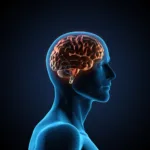
Physical vs. Psychological Addiction: Understanding the Difference
Addiction is a complex condition that affects millions of people worldwide. It can take many forms, from substance use disorders to behavioral addictions like gambling or shopping. However, addiction is often categorized into two broad types: physical addiction and psychological addiction. At Bluff in Augusta, GA, we aim to shed light on the differences between these two types of addiction, how they manifest and the ways they impact an individual’s life and recovery process.
What is Physical Addiction?
Physical addiction, often referred to as physical dependence, occurs when the body becomes reliant on a substance in order to function normally. Over time, the brain and body adapt to the presence of the substance, leading to tolerance and withdrawal symptoms when the substance is reduced or stopped. Physical addiction is most commonly associated with substances like alcohol, nicotine, prescription medications and illicit drugs such as heroin and cocaine.
How Physical Addiction Develops
When an individual uses a substance repeatedly, the body becomes accustomed to its effects. This leads to tolerance, which means that over time, the person needs more of the substance to achieve the same effects. As tolerance builds, the body’s reliance on the substance grows stronger, and stopping the substance can cause severe withdrawal symptoms.
Common withdrawal symptoms include:
- Anxiety
- Nausea or vomiting
- Sweating or chills
- Muscle pain or stiffness
- Irritability or agitation
- Seizures (in extreme cases, particularly with alcohol or benzodiazepines)
These symptoms occur because the body has adjusted to the substance and now needs it to maintain normal function. Without it, the body struggles to regulate itself.
Examples of Physical Addiction
- Alcohol addiction: Individuals with alcohol use disorder may develop physical addiction. They may need increasing amounts of alcohol to feel the effects and experience withdrawal symptoms like tremors, sweating and nausea if they try to stop drinking.
- Opioid addiction: Opioids, such as heroin or prescription painkillers, cause the brain to release large amounts of dopamine. Over time, the body becomes physically dependent on these substances, and withdrawal can be incredibly painful, involving symptoms like muscle pain, nausea and cravings.
What is Psychological Addiction?
Psychological addiction, on the other hand, is characterized by a mental or emotional dependence on a substance or behavior. Unlike physical addiction, psychological addiction doesn’t involve physical withdrawal symptoms, but it can be just as powerful and disruptive. Individuals with psychological addiction often feel a compelling need to engage in a particular behavior or consume a substance to cope with emotions, stress or trauma.
Psychological addiction is often associated with compulsive behaviors, such as gambling, shopping or behaviors like eating or exercising excessively. These behaviors are driven by the brain’s reward system, which releases dopamine to reinforce the behavior. Over time, the individual becomes psychologically reliant on the behavior or substance for emotional relief or a sense of pleasure.
How Psychological Addiction Develops
Psychological addiction develops as an individual repeatedly engages in a behavior or uses a substance to escape negative emotions or provide a sense of pleasure. This can create a cycle in which the individual is constantly seeking the substance or behavior for emotional fulfillment, leading to compulsive use or actions. Unlike physical addiction, psychological addiction is driven by the need to alleviate feelings of stress, anxiety, depression or boredom.
For example, an individual may begin gambling to escape feelings of loneliness or anxiety. The excitement and thrill of gambling lead to a release of dopamine, which the brain begins to associate with relief from negative emotions. Over time, the person becomes addicted to the emotional high they get from gambling, even though they may not experience physical withdrawal symptoms if they stop.
Examples of Psychological Addiction
- Gambling addiction: A person with a gambling addiction may not experience physical withdrawal but may feel a strong emotional compulsion to gamble. The thrill of winning or the need to escape feelings of anxiety may drive the individual to continue gambling, even when it negatively impacts their life.
- Shopping addiction: Psychological dependence on shopping may lead someone to compulsively buy things, often as a way to cope with stress or emotional emptiness. While there’s no physical withdrawal, the individual may experience feelings of guilt or anxiety when they try to stop.
Key Differences Between Physical and Psychological Addiction
- Dependence on the Body vs. the Mind
- Physical addiction affects the body and manifests as tolerance and withdrawal symptoms. The body becomes dependent on a substance to function normally.
- Psychological addiction affects the mind, creating a compulsive need to engage in a behavior or consume a substance for emotional or psychological relief.
- Withdrawal Symptoms
- In physical addiction, withdrawal symptoms are often intense and can be physically painful or even life-threatening in some cases, especially with substances like alcohol, benzodiazepines or opioids.
- Psychological addiction does not have physical withdrawal symptoms but may involve emotional or mental distress, such as anxiety, depression or irritability.
- Substance vs. Behavior
- Physical addiction is typically associated with substances like drugs, alcohol or nicotine.
- Psychological addiction can also involve behaviors, such as gambling, gaming or excessive work, food or exercise.
- Treatment Approaches
- Treatment for physical addiction often involves detoxification, medication and therapy to address the physical aspects of withdrawal and cravings.
- Psychological addiction requires therapy, particularly cognitive behavioral therapy (CBT), to address the emotional and mental compulsions driving the behavior. Support groups and self-help strategies can also be beneficial.
Can You Have Both?
It’s possible for an individual to experience both physical and psychological addiction simultaneously. This is often seen in cases of substance use disorder, where an individual may not only experience physical withdrawal symptoms but also an emotional or mental need to continue using the substance. For example, someone with alcohol addiction may experience both physical withdrawal symptoms when they stop drinking, as well as an emotional reliance on alcohol to cope with stress or anxiety.
How to Treat Physical and Psychological Addiction
Treatment for addiction—whether physical or psychological—should be individualized and comprehensive. Here are common approaches to both types of addiction:
- For physical addiction:
- Detoxification: Withdrawal management involves removing the substance from the body safely, often under medical supervision.
- Medication: Prescription medications can help manage withdrawal symptoms or reduce cravings (e.g., methadone for opioid addiction or naltrexone for alcohol addiction).
- Therapy: Behavioral therapies like CBT can help individuals address the root causes of their addiction and develop healthy coping strategies.
- For psychological addiction:
- Therapy: Cognitive behavioral therapy (CBT) and other forms of psychotherapy can help individuals recognize and change the thought patterns that fuel their addictive behaviors.
- Support groups: Peer support groups like Alcoholics Anonymous (AA) or Narcotics Anonymous (NA) provide a sense of community and shared experience, which can be vital for recovery.
- Mindfulness and stress management: Techniques like meditation, yoga and mindfulness can help individuals manage the emotional triggers that lead to addiction.








